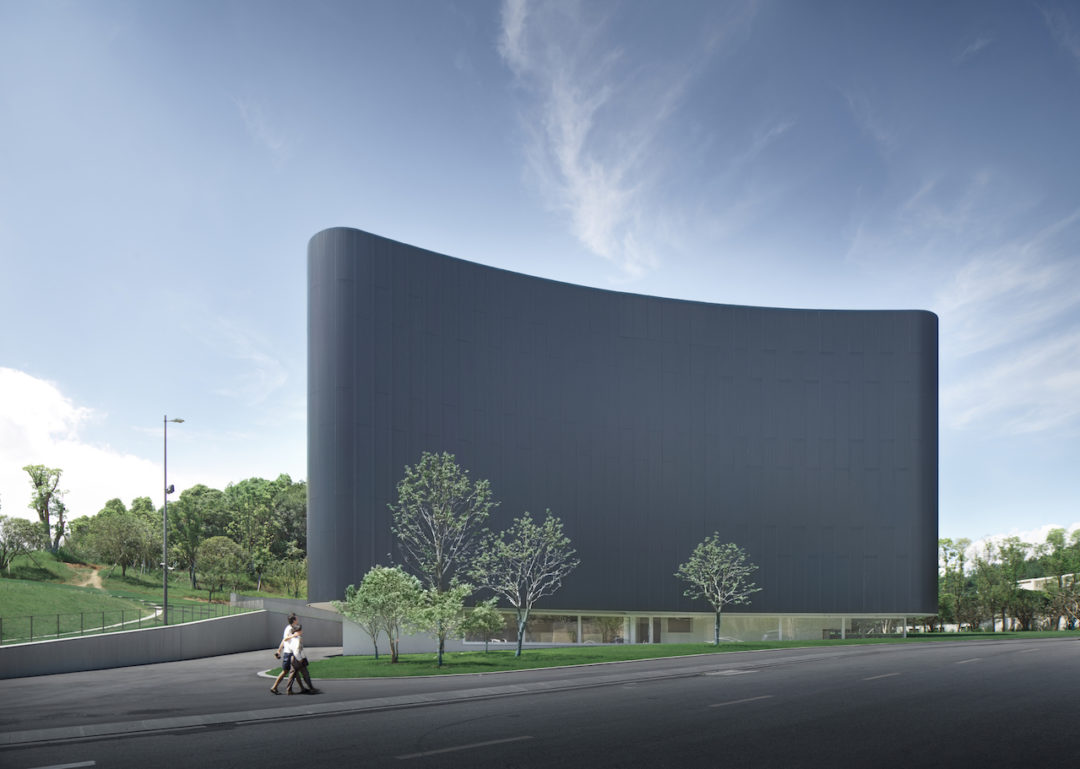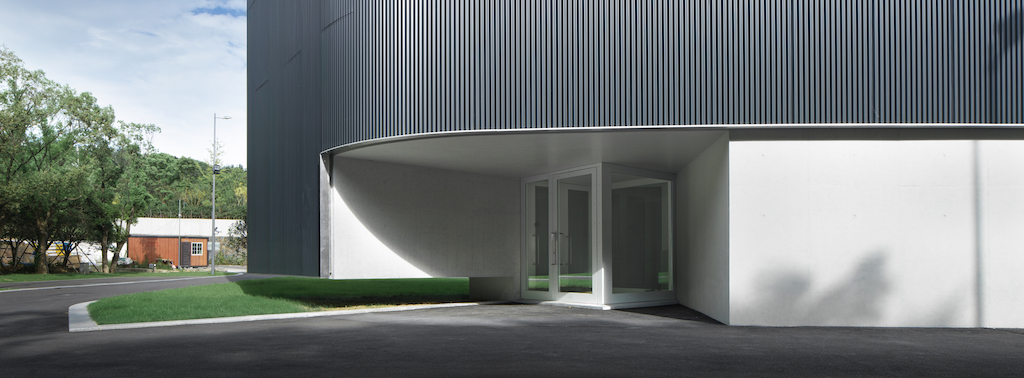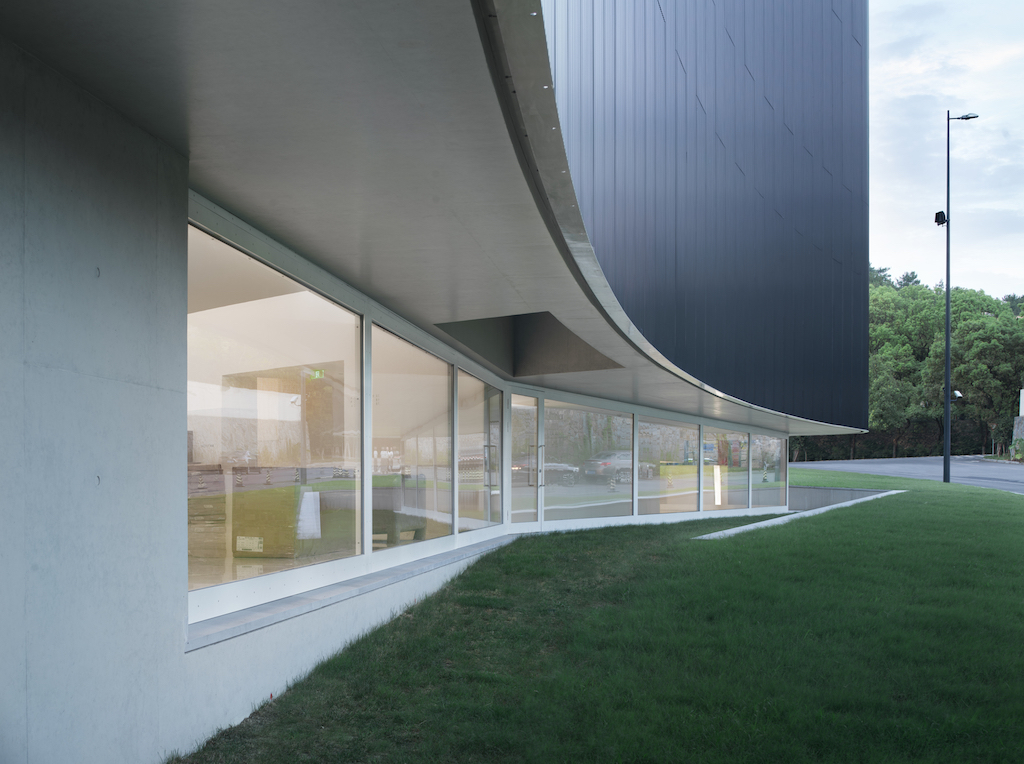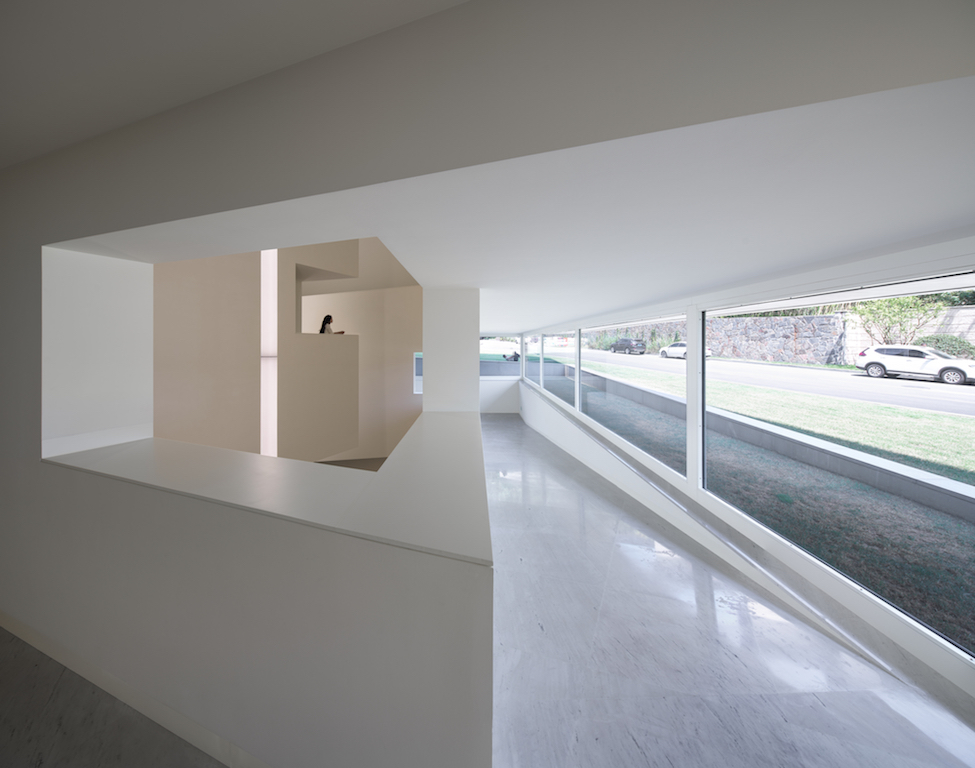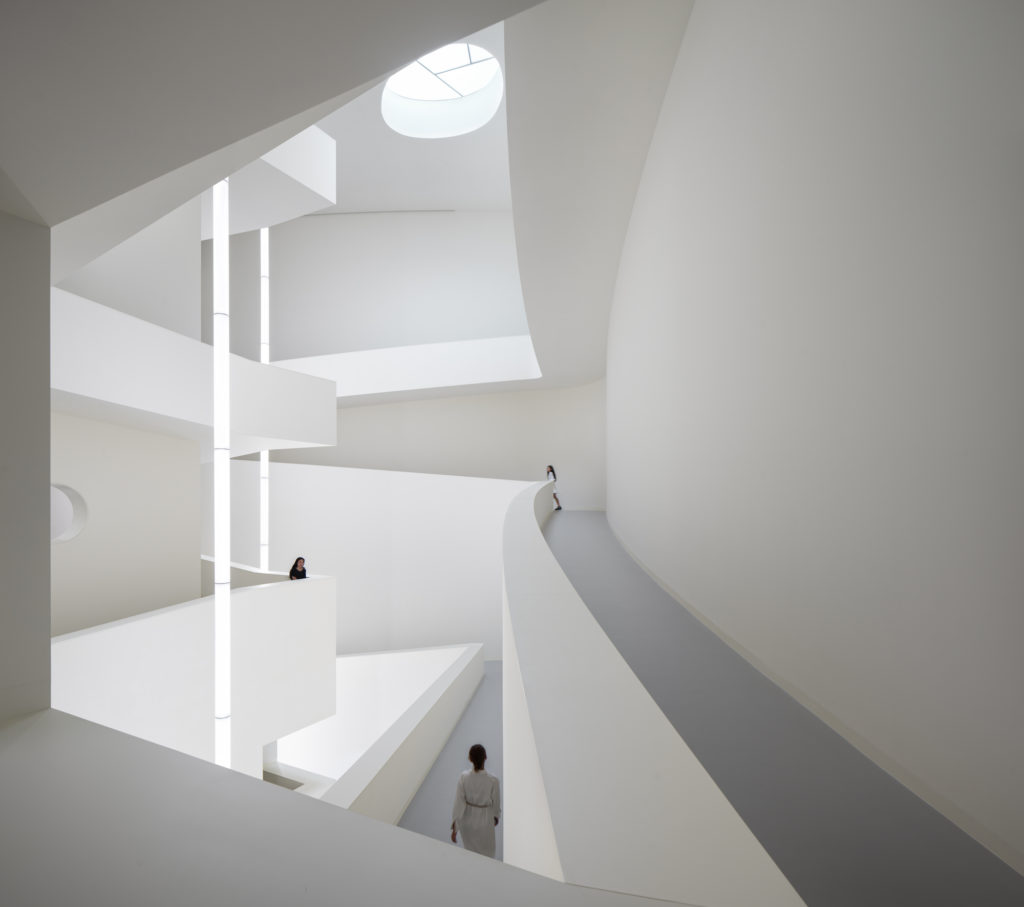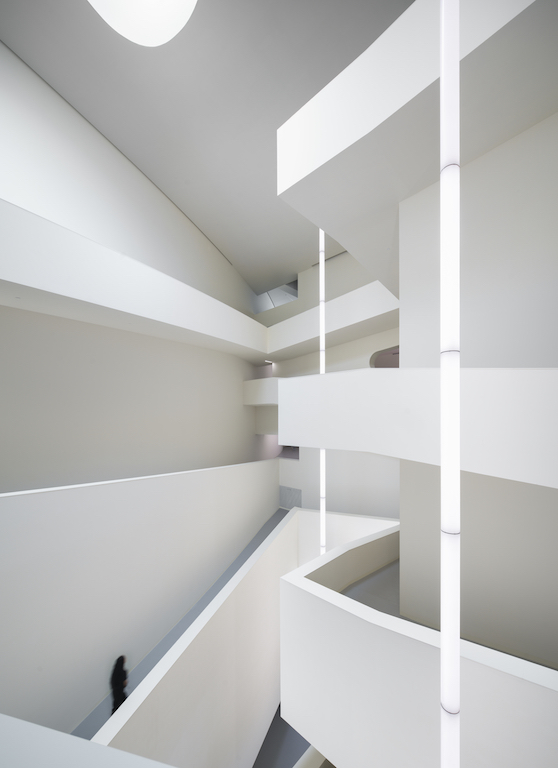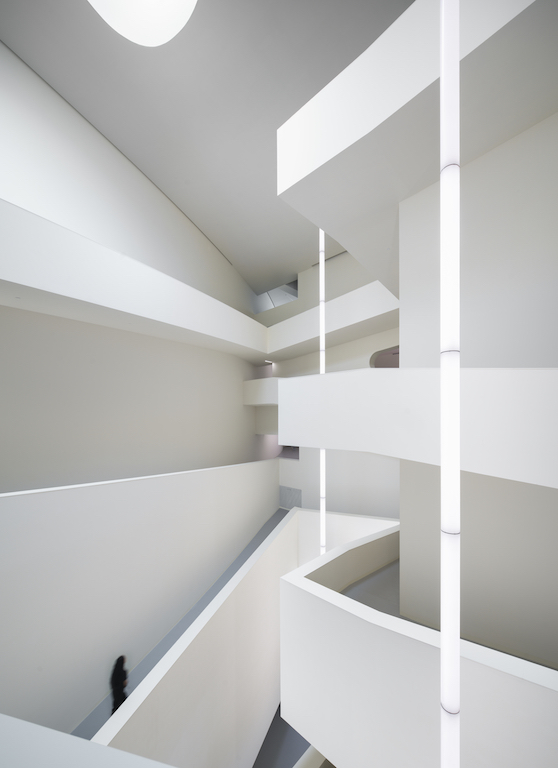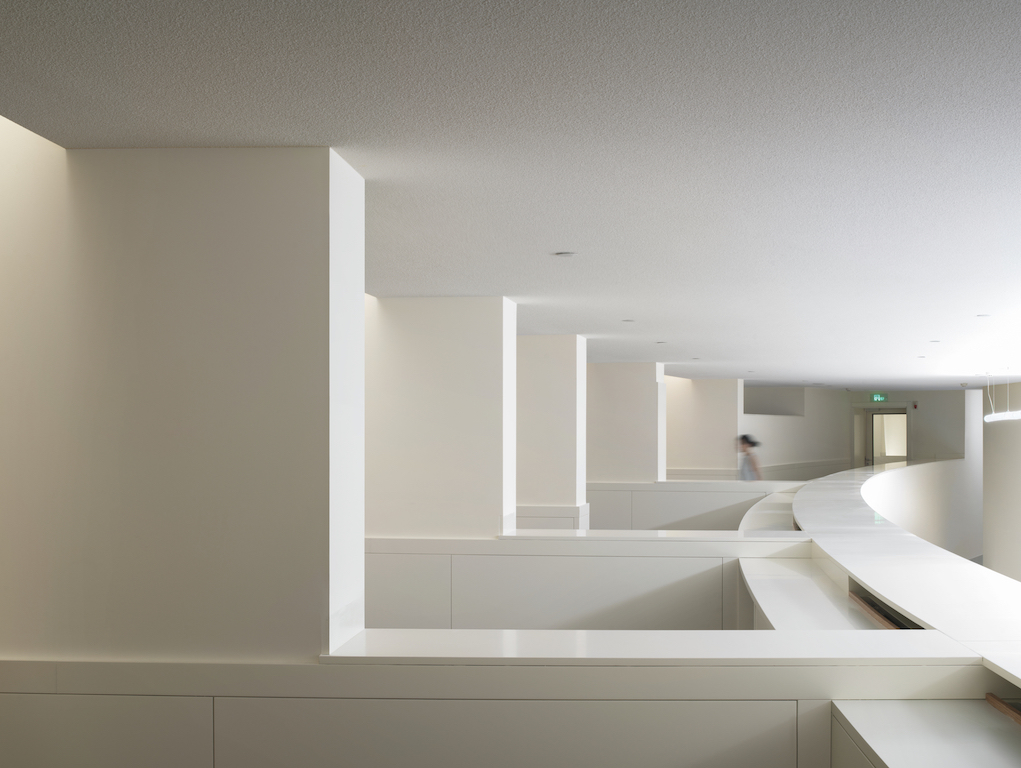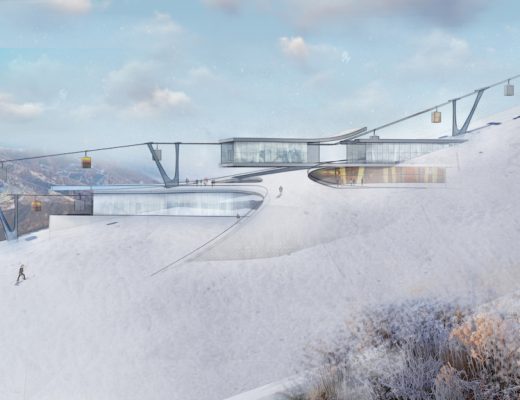Located along the northern shore of Lake Donqian, Huamao Museum of Art Education of Ningbo, designed by Álvaro Siza and Carlos Castanheira, has opened in the port city of Ningbo in eastern China’s Zhejiang province . Its plan has a triangular form, delineated by continuous walls, with slightly curved rather than angled corners.

On the ground floor, the volume of the museum emerges isolated and bordered on its three sides by planted or paved areas. Public and service access to this level – which is designated P0 – together with access to the VIP area, are located on the northwest facade, in the gap between the museum and the hillside. This space extends, wrapping around the museum and connecting with the access road.
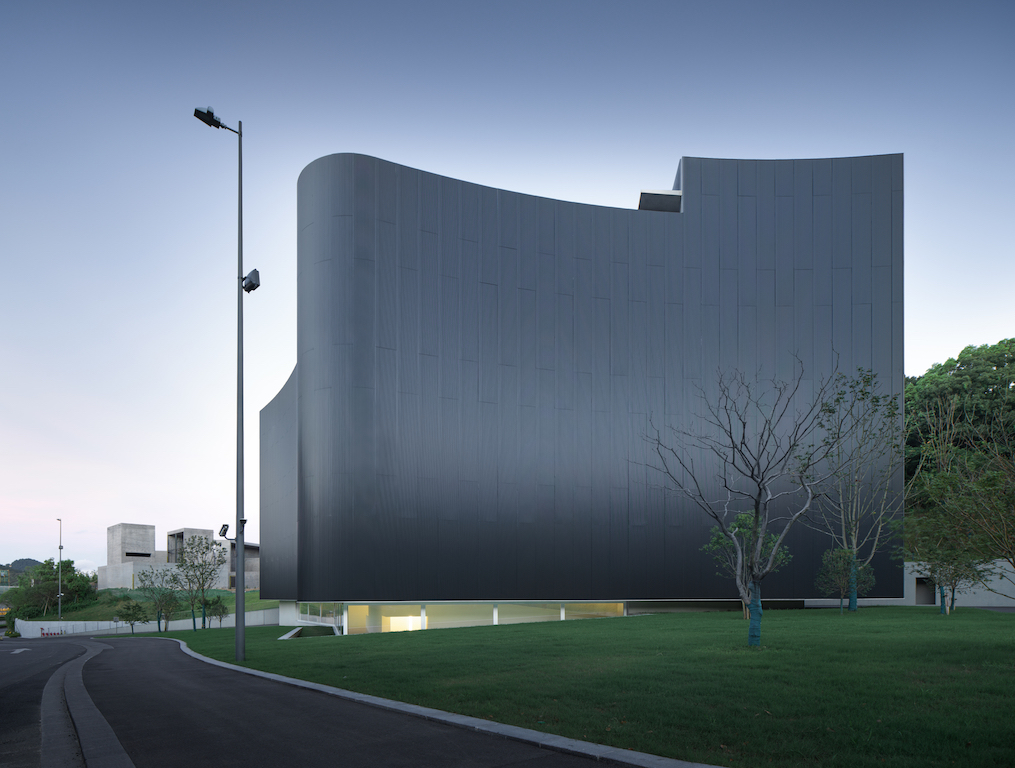
Generally, on all floors, the internal spaces in a strip to the northwest, are occupied by atriums, lifts, stairwells, services and washrooms. A second strip is occupied by spaces of larger dimensions: foyer, library, administration and exhibition rooms.
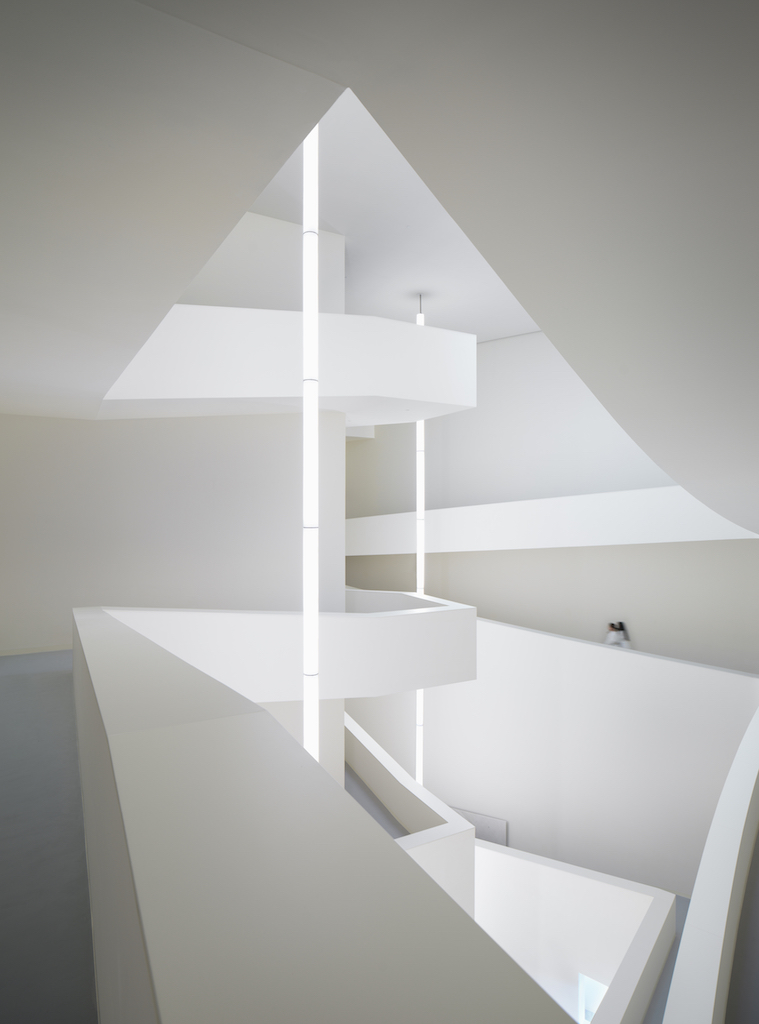
Finally, on the southeastern side, there is an ample, full-height triangular space, top-lit by a roof skylight and surrounded by ramps from the first to the fourth floor. The natural lighting is highlighted by the white walls and is brought into the surrounding rooms, through deliberately placed openings.
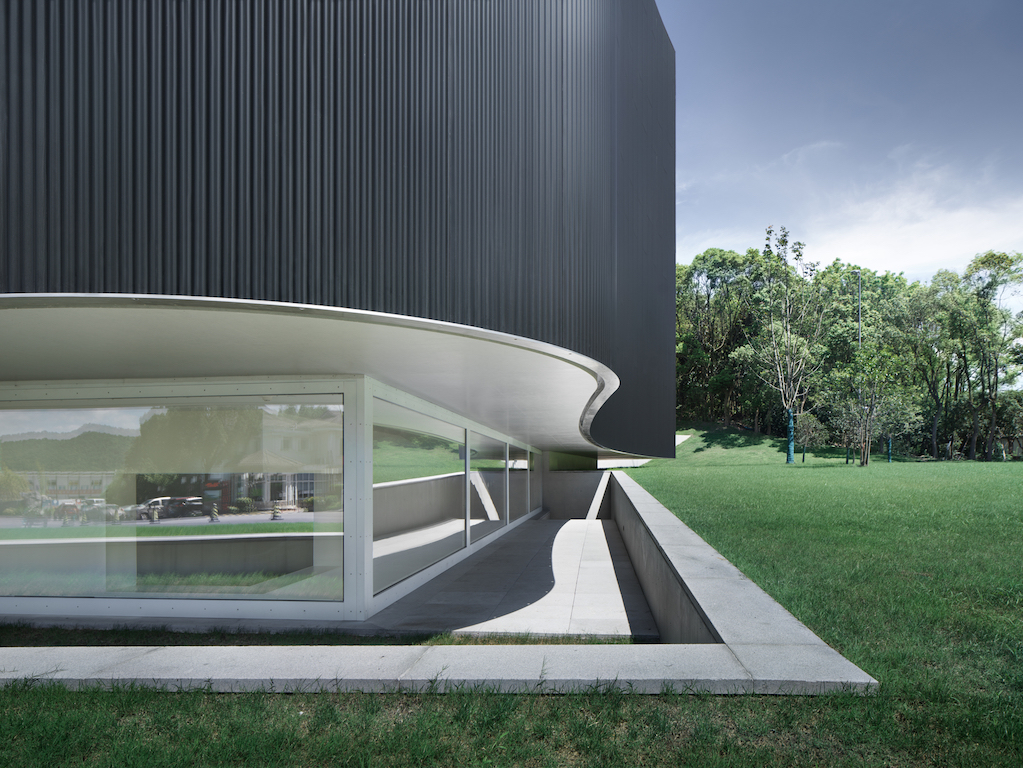
The basement and the recessed top floor are differentiated by function and dimension. They are organised according to the planned spatial and structural order and in accordance with the impact of other floor levels. In the basement, the area corresponding to the visible volume of the building, with uses and circulation similar to the upper floors, also extends under the entrance way to the northwest, between the hillside and the museum and under a narrow band of the hillside, accommodating technical areas.
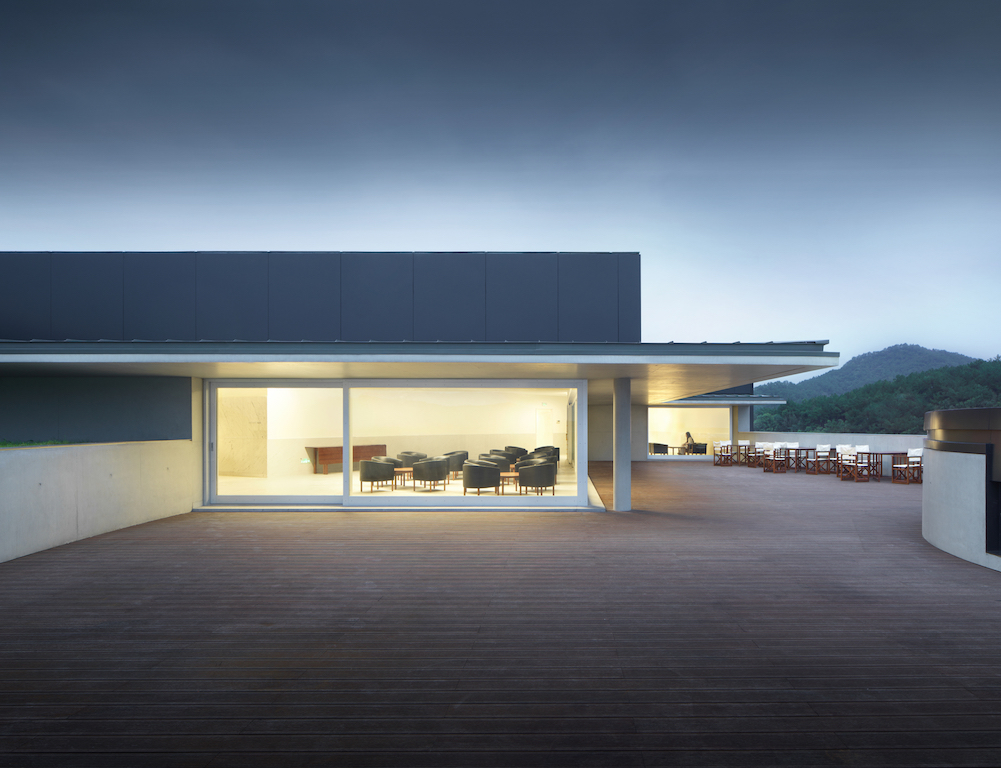
The structure and roof slab for a second level, which is accessible from the basement and from the museum entranceway, retains and limits the hillside and its vegetation. A set-back floor is the designated VIP area that opens out to the rooftop terrace.

The building, clad in corrugated aluminium sheeting, appears dark in the landscape. Its image constantly shifting from black to silver, depending on the angle of incidence of light and the angle of vision. The interior is a showcase of daylight, captured in the internal patio and distributed from there to spaces arranged around it, becoming progressively less intense.
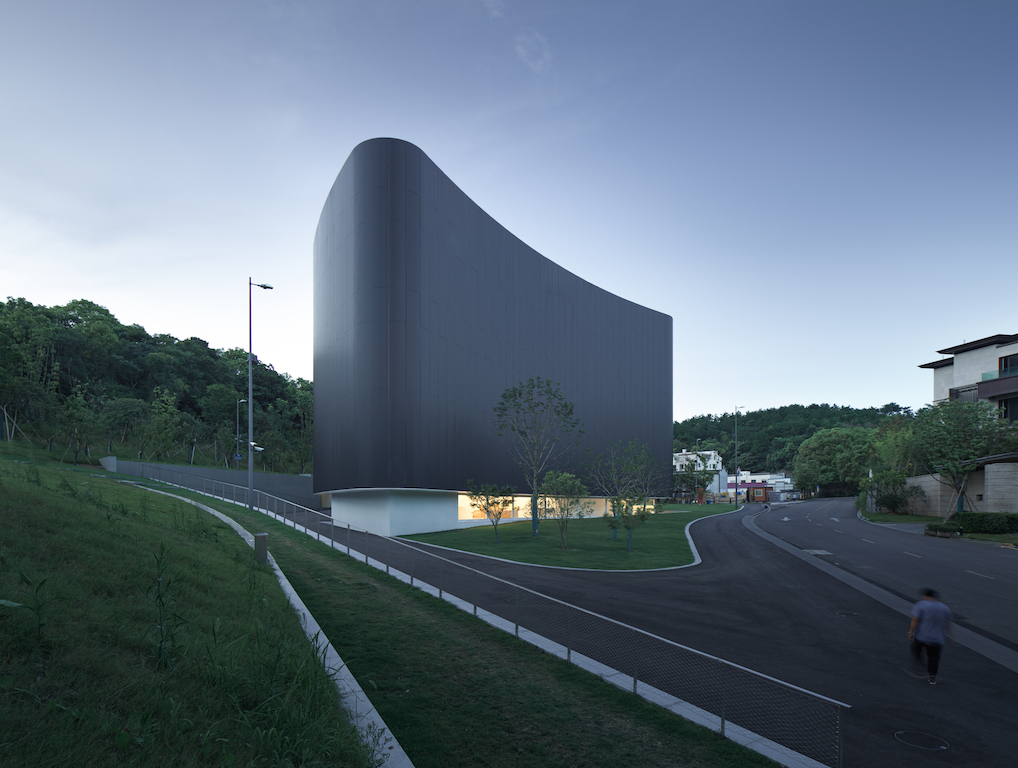
The controlled lighting, specific to the different exhibition spaces, uses tube lights, suspended both horizontally and vertically as suits in each case.
Externally, a pedestrian ramp connects the museum entranceway with the road network of the nearby residential area and hotel. A fundamental intent of the project is for it to be part of a convivial relationship between the natural landscape and the pre-existing and planned buildings while maintaining the role of the protagonist that is appropriate to a public and cultural building.
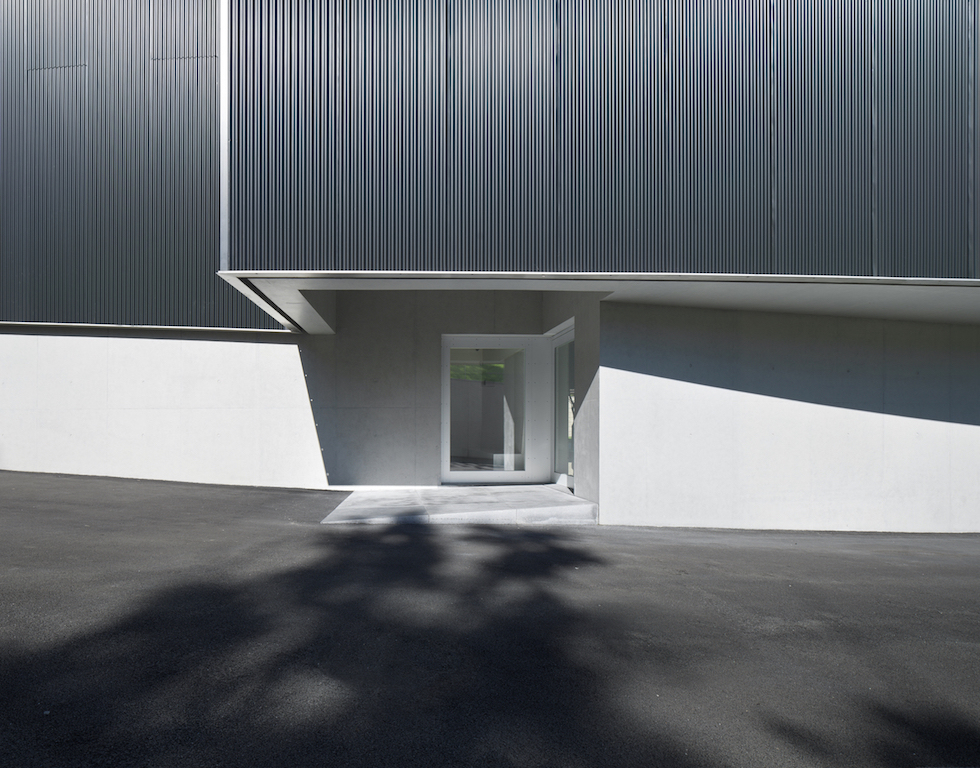
According to Casthanheira, a museum must be big and bright inside. The Art Education museum is a small museum that is immense inside.
Leaning against the hillside, its undulating form hovers above the ground. It is intriguing in its elegance and in its mystery. Nothing is obvious in this seemingly-small building.

The public entrance is reached after passing around the form of the building and experiencing an imposed, absorbing compression, to then be released into a vast space, the full height of the building, where a snaking ramp links all the floor levels. This exercise of compression and release is constant during the visit.
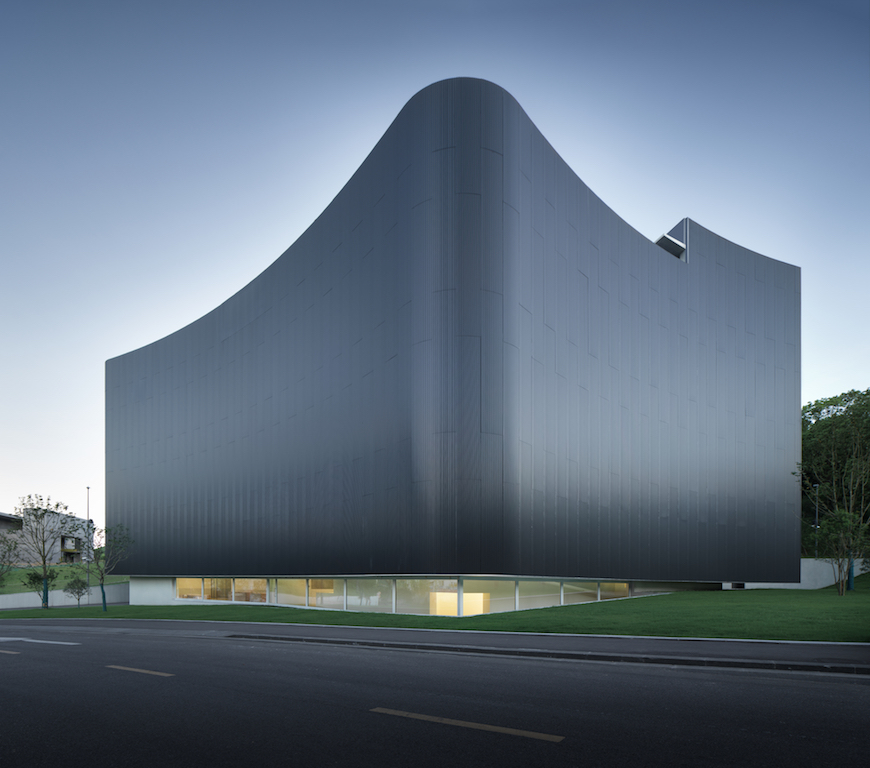
This diversity in routes and the interconnection of spaces makes this small building vast inside. Its volume is equally challenging.
On the exterior, it is suspended above the ground as it undulates in its metal cladding. It reflects the ever-changing daylight that makes the form constantly move and transform.
Inside, the introspective calm of the exhibition spaces contrasts with the movement of the visitors circulating in the enormous void. Dynamism is taught through Art.
Project details:
- Architects: Alvaro Siza + Carlos Castanheira
- Area: 5,300 m²
- Year of completion: 2020
- Photographs: Bowen Hou
- Manufacturers: Sto, CLIMAR
- Architect-in-charge: Álvaro Siza with Carlos Castanheira
- Project architect: 1st phase (schematic design) – Luis Reis, Elisabete Queirós, Pedro Carvalho; 2nd phase (design development/construction) – Pedro Carvalho
- Project team: Jorge Santos, Joana Soeiro, Sara Pinto, Susana Oliveira, Francesca Tiri, Rita Ferreira, Diana Vasconcelos, Inês Bastos. Luísa Felizardo
- 3d Models and renderings: Germano Vieira, Sara Noronha
- Local management & supervision: Chunyi Liu
- Light design: Alexandre Martins – GPIC
- Acoustical engineering: Filipe Andrade Santos
- Structural engineering: Paulo Fidalgo – HDP
- Consultants: Zhejiang Huazhi Architecture Design Ltd (Xiuguang Tong, Zheren Li, Tianying Cheng)
- Office In Ningbo: Design institute of Landscape & Architecture – China Academy of Art
- Engineering: Hangzhou MJP Mechanical & Electrical Design Consultant Ltd
- Construction company: Zhejiang Wanhua Construction Ltd
- Model: Escala Reduzida
- Clients: Ningbo Huamao Education Culture Investment Ltd.
- City: Ningbo
- Country: Lianxin Road, Dongqian Lake, Ningbo, Zhejiang, China
See the full image gallery here:
Photos: Bowen Hou
You might also like:
Shuyang Art Museum by Zhejiang University design team draws upon its town’s calligraphic heritage

